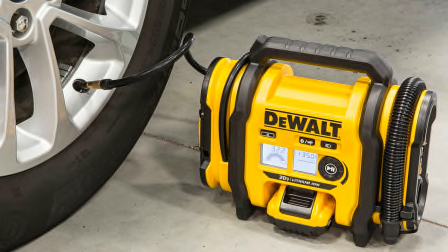How to Wash Your Car
Do-it-yourself car wash tips and advice for when you want help scrubbing

For many vehicle owners, washing a car by hand is a therapeutic act as beneficial for the person’s state of mind as for the vehicle’s appearance. That’s good, because frequent washing is also the best way to maintain a new-car finish and detect blemishes and other potential issues, such as rust or loosening trim. But as simple as washing your car may seem, there are some things to watch for so that you don’t accidentally scratch or degrade the finish.
Below are some basic car-washing tips. And if you prefer to use an automated, drive-thru car wash, be sure to learn which extras are worth the money.
The Right Car-Cleaning Products
Don’t use household cleaning agents like hand soap, dishwashing detergent, or glass cleaner on the paint. These aren’t formulated for use on a car’s paint and may strip off the protective wax.
Do use a dedicated car-wash product, which is milder and specifically designed for use on automotive paint. Apply the suds with a large, soft natural sponge or a lambswool mitt.
Get more car maintenance and repair tips from CR.
Tips for Washing a Car
Don’t wash your car when the body is hot, such as immediately after driving it or after it has been parked in direct sunlight for a while. Heat speeds the drying of soap and water, making washing more difficult and increasing the chances that spots or deposits will form.
Don’t move the sponge in circles. This can create light but noticeable scratches called swirl marks. Instead, move the sponge lengthwise across the hood and other body panels. And don’t continue using a sponge that’s dropped on the ground without thoroughly rinsing it out. The sponge can pick up dirt particles that can scratch the paint.
Do rinse all surfaces thoroughly with water before you begin washing to remove loose dirt and debris that could cause scratching. Once you begin, concentrate on one section at a time, washing and rinsing each area completely before moving on to the next one. This ensures that you have plenty of time to rinse before the soap dries. Start at the top, then work your way around the car. An adjustable hose nozzle adjusted for a wide spray works well. With a polished finish, use a hose without a nozzle and let the water flow over the car from top to bottom when rinsing. This creates a sheeting action that helps clean soap from the body, while reducing water pooling on the body, thereby making it easier to dry.
Do work the car-wash solution into a lather with plenty of suds that provide lots of lubrication on the paint surface. And rinse the sponge often. Using a separate bucket to rinse the sponge keeps dirt from getting mixed into the sudsy wash water.
How to Dry the Car
Don’t let the car air dry, and don’t expect a drive around the block to do an effective job. Either will leave watermarks caused by minerals in hard water. In addition, don’t use an abrasive towel or other material that can leave hairline scratches in the paint.
Do use a chamois (natural or synthetic) or soft terry towels. If you choose towels, you may need several. It’s best to blot the water up instead of dragging the towel or chamois over the paint. The drying process can be speeded up by using a soft squeegee to remove most of the water on the body, but be sure the rubber is pliable and that it doesn’t pick up bits of dirt that can cause scratches. A clever technique suggested by CR’s chief mechanic John Ibbotson is to use a leaf blower set to low to quickly remove water—preferably with a light-duty battery-powered blower to avoid electrical issues being around water.
When to Pay for a Car Wash
Treating your car to a regular hand-wash is a great way to monitor the car’s condition, looking for rock chips or other damage, while ensuring the soapy task is handled with care. However, not all drivers have convenient access to a hose or the time to wash the car themselves.
Automated washes make it easy to freshen a car’s appearance and spray off winter salt from the undercarriage, but they have their downsides. They be expensive, and motorized brushes can damage the car by grinding in grime from other cars or by catching on to loose parts such as rear wipers or trim pieces.
If you want to use an automated wash, touchless ones are best for protecting your car. The trade-off is that they may not get the finish as clean as you would like.
Pay-and-spray places, where you feed quarters into a machine to power a high-pressure water gun, can be a good compromise. When using one, take care not to blast off fragile trim or bump into the paint with the metal nozzle.
Hand-wash services are common, and they can do a great job of getting into the door seams and other hard-to-access locations that a machine would miss. Just be sure they are using clean cloths on your car. Pass on the shiny dash and tire treatments; they are not needed.
For the true spa treatment, consider paying for a full detail in the spring to remove sand and other winter filth. Expect to pay over $200 for deep cleaning the interior and exterior. These local businesses typically offer additional services, like polishing, waxing, and headlight restoration. It is common that the services are mobile, making them a convenient, premium experience.
“Professional detailing is underrated,” says Mike Crossen, lead automotive technician at Consumer Reports. “Detailers can remove some scuffs and scratches the average owner cannot because they have the tools and experience—and that ability is what you’re paying for.” He compares car care to dental hygiene, explaining that even though you brush and floss daily, it is important to visit the dentist for a cleaning every six months.




















